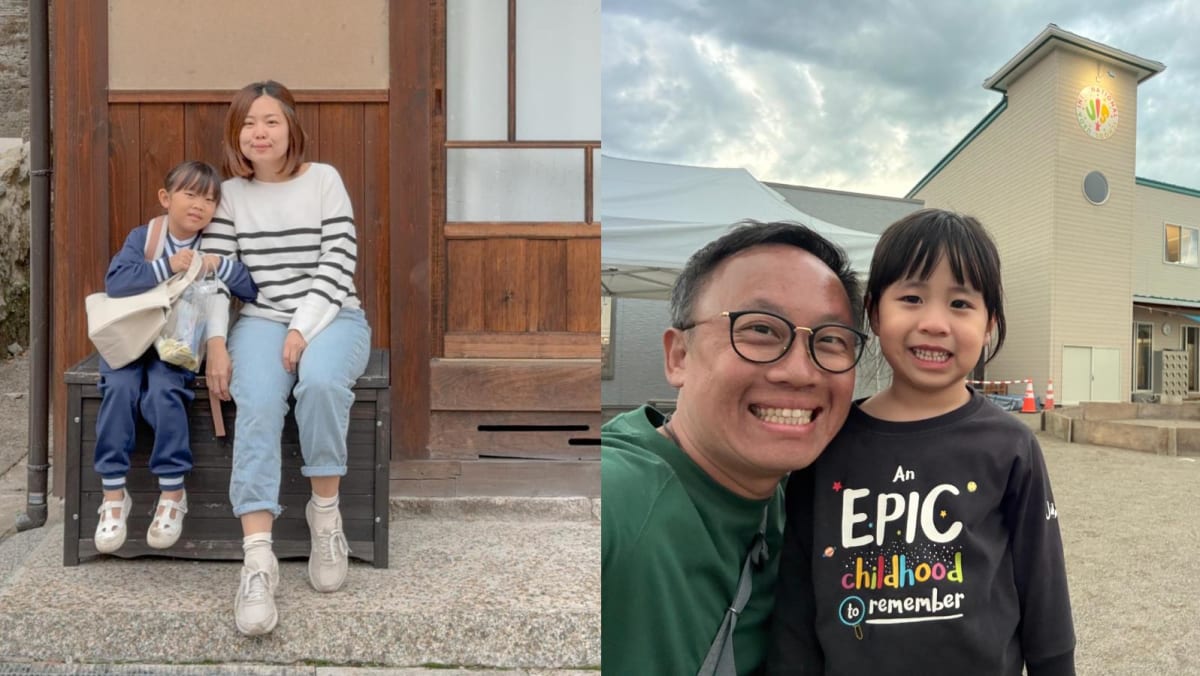“Singapore’s education is different, and we really wanted her to experience the countryside and outskirts a bit. For instance, her school in Singapore is air-conditioned, but the Japanese school is not,” he said.
In Singapore, the children are “more protected, with a bigger sense of self-entitlement”, he added.
The classes also had a lower teacher-to-students ratio than in Singapore, where the Early Childhood Development Agency’s rules stipulate one staff member to every 20 to 25 children for Eden’s age group.
“Each class had 13 students including her. The curriculum consisted of half a day of academic syllabus and half a day of outdoor play,” said Mr Sim.
Singapore also places more emphasis on academic learning, and the syllabus starts earlier in the preschool stage, he said.
“But in Japan, it is about personal development and the softer aspects, such as motor skills and interpersonal skills.”
Ms Chia also said the Japanese curriculum is “more nature-based and experiential” compared to back in Singapore, where Leanne is enrolled in Zion Bishan Kindercare Child.
For instance, Leanne had a different experience on each of the five days she attended classes there, said Ms Chia.
“There was once when they prepared ingredients and cooked their own lunch. Then because it was Halloween, they also had a little Halloween parade, walking around Omori town. On another day, they went on a nature walk.
“It kind of broadened her horizons and helped her appreciate the cultural differences that they have.”
OVERCOMING THE LANGUAGE BARRIER
Both parents told CNA that they and their children do not speak Japanese. But the language barrier was not an issue and their children managed to get by.
Initially, Eden and her classmates relied heavily on body language and the teachers’ translations to interact, said Mr Sim.
“But after a while, she started to be able to name her friends, and began to pick up Japanese words like ‘hello’ and greeting others before eating,” he said.
“She also learnt some simple words while playing, such as ‘please’ and ‘excuse me’.”
In hindsight, Eden’s two-week programme was a bit short, said Mr Sim, as his daughter was just starting to get used to her classmates at the end of the first week.
Ms Chia added that the use of mobile translation apps helped them communicate with the local community.
“The teachers all communicate in Japanese. So when the teacher wanted to ask her (Leanne) something, or when she wanted to tell them something and they didn’t understand, they would use Google Translate.”
WORTH THE MONEY
Ms Chia forked out about S$3,000 (US$2,200) for Leanne’s week-long programme, including school fees and accommodation for both of them. Other expenses, such as flight tickets, meals and daily necessities, were not covered.
“A bit expensive, to be honest, but worth it. It’s a trip she will always remember,” she told CNA.
The programme’s head Ms Chiyu said prices can go up to 3 million yen (US$19,500) for two adults and one child for three months.
The actual prices vary depending on the preschool selected and the choice of accommodation.
